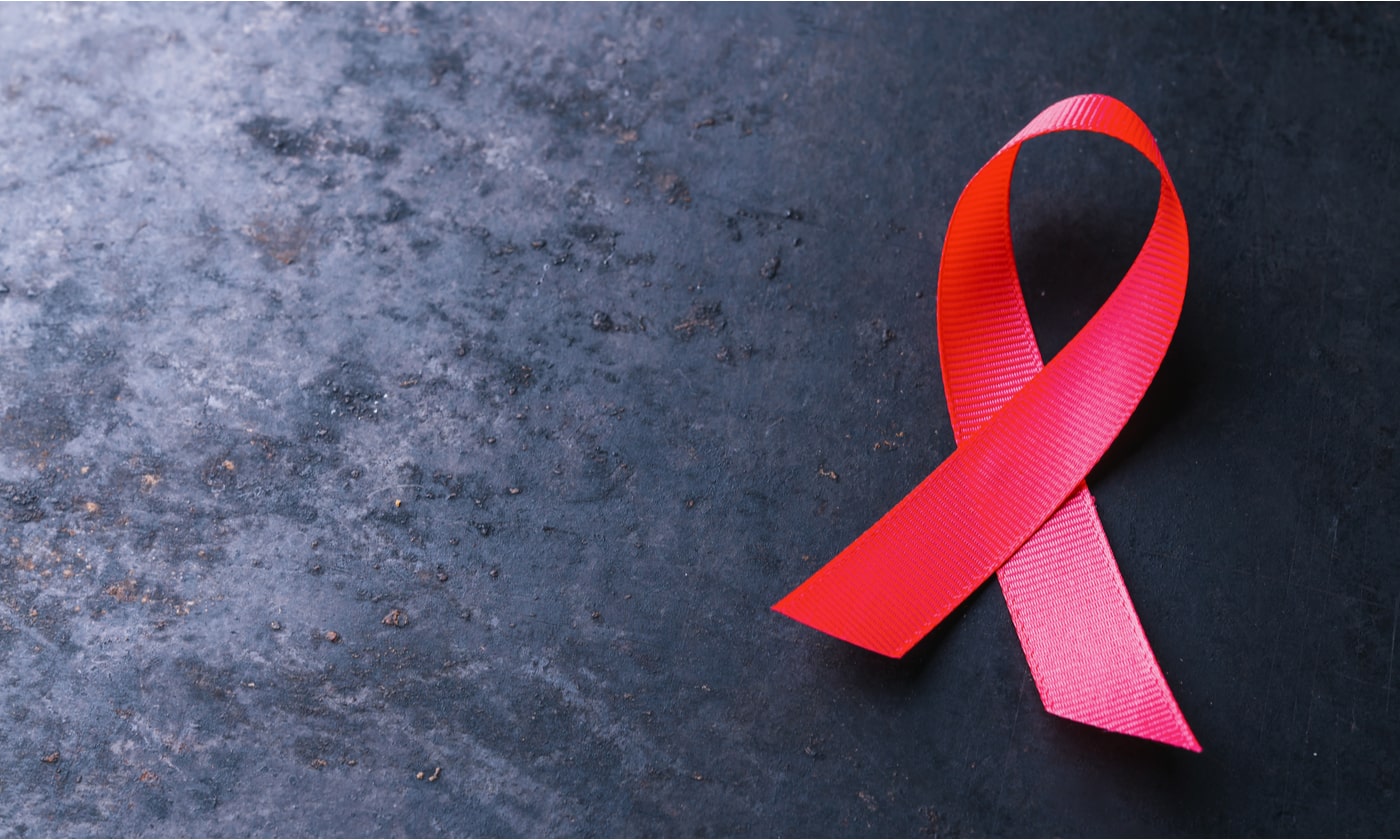Human immunodeficiency virus (HIV) is a sexually transmitted disease (STD), which targets the cells of the immune system, in particular, a type of white blood cell called a helper T cell (or CD4+ T cell) (1).
Helper T cells are probably the most important cell type in adaptive immunity. They release cytokines (messenger molecules) to activate B cells (antibody-producing immune cells) and activate cytotoxic T cells (white blood cells that kill infected target cells) (2). So, when there are not enough helper T cells, the whole immune system is affected, and this is exactly what happens in people with HIV, particularly untreated HIV that develops into AIDS.
HIV patients suffer from a range of symptoms, including very high susceptibility to various microbes, some of which are normally harmless in healthy people. HIV patients also have an increased risk of developing specific cancers, known as “HIV-associated cancers”. Three cancers, in particular, are termed “AIDS-defining cancers” or “AIDS-defining malignancies” (3).
What are the three “AIDS-defining cancers”?
- Kaposi sarcoma (500x increased risk in HIV patients)
- Aggressive B-cell non-Hodgkin lymphoma (12x increased risk)
- Cervical cancer (3x increased risk)
If someone with HIV is diagnosed with one of these cancers, it confirms a diagnosis of AIDS (3).
What other cancers are most common in HIV patients?
Other cancers that are more common in HIV patients are collectively termed “non-AIDS-defining cancers” (3) and include:
- Hodgkin lymphoma (8x increased risk)
- Anal cancer (19x increased risk)
- Liver cancer (3x increased risk)
- Oral cavity/pharynx cancers (2x increased risk)
- Lung cancer (2x increased risk)
HIV patients are not only at a greatly increased risk of developing one of these cancers, but they also are at a much higher likelihood of dying from cancer too (3).
Why are these cancers more common in HIV patients?
HIV severely weakens the immune system by killing off helper T cells that are so vital for a good immune response. This means HIV patients are a lot more susceptible to viral infections, including viruses that can lead to cancer (3). Examples of these viruses include:
- Kaposi sarcoma-associated herpesvirus (KSHV) aka human herpesvirus 8 (HHV-8) – causes Kaposi sarcoma and some lymphoma subtypes
- Epstein-Barr virus (EBV) – causes some non-Hodgkin and Hodgkin lymphoma subtypes
- Human papillomavirus (HPV) – high-risk types can cause cervical, vaginal, and vulvar cancers, anal cancer, penile cancer, as well as mouth and throat cancer
- Hepatitis B and hepatitis C viruses – cause liver cancer
There are also other reasons that cancer is more common in HIV patients, including:
- Increased likelihood of other risk factors (e.g., smoking, heavy alcohol consumption)
- Immunosuppression and inflammation may increase cancer risk
Does antiretroviral therapy decrease the cancer risk in treated HIV patients?
Antiretroviral therapy (ART) has reduced the number of people affected by certain cancers (e.g., Kaposi sarcoma) but the risk in HIV patients is still higher than in people not infected with HIV (3). In addition, effective ART significantly increases the lifespan of HIV patients, but this also means there are now more older people living with HIV (that prior to ART would have succumbed at a much younger age). This means that there is now an increased incidence of cancers common in older age in people with HIV (3).
What are ways for HIV patients to reduce their cancer risk?
- Start on ART as early as possible and continue to take ART medications as instructed
- Abstain from smoking
- Limit alcohol intake
- Get tested for Hepatitis B and Hepatitis C and obtain treatment if required
- Regular screening for cervical cancer (HPV high-risk test available here)
- Get the HPV vaccine (if less than 26 years of age)
References:
1. Al-Jabri AA. (2003) How does HIV-1 infect a susceptible human cell? J Sci Res Med Sci. 5(1-2): 31-44.
2. Alberts B, et al. (2002) Molecular Biology of the Cell. 4th edition. New York: Garland Science; 2002. Helper T Cells and Lymphocyte Activation.
3. HIV Infection and Cancer Risk. NIH, National Cancer Institute. Reviewed Sept 2017.



